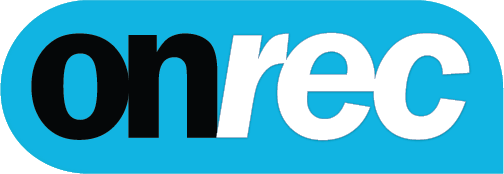The rare scenario is one where HR is ahead of the curve and anticipates the shifts. The labor market, like any other market, sends signals long before major changes happen.
Financial analysts use these macroeconomic indicators as data to forecast what the financial markets and investment cycles may look like going forward. Similarly, HR and recruitment industries can use the same data to anticipate trends in the field like hiring trends, salary pressures, and emerging skill shortages. When macroeconomics are “read” the same way that investors do, HR teams can move to a proactive approach to human resources versus just a reactive outlook.
Below, we’ll explore three data-informed ways to do just that: identifying leading indicators that are helpful for recruitment.
Leading Indicators for Recruitment: Reading the Economy
In economics, leading indicators are data sets that shift before the market catches on to them. For recruitment, it means identifying and monitoring these signals that predict whether hiring activity will accelerate or stall.
Key indicators worth watching include:
Purchasing Managers’ Index (PMI)
The Institute for Supply Management’s PMI often moves several months ahead of employment trends. It tracks how active manufacturing or service industries are. A PMI above 50 typically indicates growth. However, the rollover into employment growth tends to come after the PMI index, with one to two quarters.
Business Investment (CapEx)
When the Bureau of Economic Analysis (BEA) reports a rise in private nonresidential investment, it’s an indicator that companies are looking to expand, which is then followed by a spike in hiring.
Job Openings and Labor Turnover Survey (JOLTS)
The U.S. Bureau of Labor Statistics (BLS) publishes JOLTS data monthly. This shows the number of job openings, hires, and quits. When there is a decline over a period of time in job openings and quit rates, it typically points to a slowing down of the economy.
For the HR industry, tracking these trends doesn't need to be a complex exercise. A dashboard with these three public data sources can alert you of movement in the field ahead of time. When PMI and CapEx are climbing together, you can anticipate a hiring surge; when both are falling, prepare for hiring freezes or longer time-to-fill-role cycles.
The Federal Reserve Bank of Dallas found that business sentiment surveys and PMI data predicted 2023 hiring slowdowns with surprising accuracy. Applying this same lens internally enables you to move recruitment from reactive to proactive.
The Economics of Salary Inflation: When Macro Pressures Hit Pay Expectations
Salary expectations don’t emerge in isolation; they’re a reflection of the broader macroeconomic climate, from social and political shifts to technological change and demographic trends.
As everyday costs increase, employees expect salary adjustments to maintain their standard of living. At the same time, fewer people are available or willing to work, which means competition for positions intensifies. Employers are forced to offer bigger salaries in order to attract and retain staff. This doesn’t mean production changed, but market conditions forced wages to climb. This is a trend that greatly influences budgets for hiring and availability factors that HR and recruitment leaders must factor into planning.
According to the Federal Reserve Bank of Cleveland’s 2024 Economic Commentary, small increments of wage growth in service industries closely track measures of labor-market tightness, particularly the vacancy-to-unemployed ratio. The tighter the labor market, the faster wages rise.
Meanwhile, the Bureau of Labor Statistics reports that as inflation peaked in 2022–23, real (inflation-adjusted) earnings lowered even while nominal wages increased. This meant workers pushed for increases just to maintain purchasing power.
HR can use three national indicators as guidance for early warning signs:
Consumer Price Index (CPI)
Published monthly by BLS, CPI inflation tends to lead wage growth by approximately six months.
Labor Force Participation Rate
When labor participation falls (as it did post-pandemic) from 63.4% in early 2020 to 62.6% in 2024, the available labor pool contracts, meaning available candidates have greater bargaining power.
Employment Cost Index (ECI)
The ECI provides quarterly data of total compensation changes across all industries. This is a dependable source to guide compensation planning.
Together, these indicators can help HR forecast when wage pressure is likely to spike. The key takeaway here is that macro data influence compensation, and both employers and employees can gain from monitoring macroeconomic data to guide and set realistic expectations during salary negotiations.
The “Skills Gap”: Separating Myth from Market Friction
The phrase “skills gap” is often used but often misunderstood. Not every shortage reflects a true unavailability of skills. Some reflect a level of market friction, which is the temporary discrepancy between wage levels and demand. The skills exist, just not at the pay levels being offered.
Research by the Federal Reserve Bank of New York in 2024 introduced a new indicator of labor-market tightness using both unemployed and employed job seekers. The findings show that when individuals are actively job hunting, there’s more competition for talent, and wages increase as companies need to pay more to attract or retain workers.
This matters for HR strategy:
- When wages as well as vacancies grow, it likely points towards a structural shortage of skilled workers.
- If vacancies rise but wages remain stagnant, the gap is likely to be recurring, as its driven by compensation, not capability.
The Conference Board echoes this in its 2018 report, noting that many “shortages” in sectors like logistics, healthcare, and construction are wage-related to a degree, rather than purely skills-based. Additionally, its influences by broader social and economic factors.
For practical modeling, compare three data sets:
- Vacancies (JOLTS) vs. Unemployment Rate (BLS): the vacancy-to-unemployment ratio explains how competitive the job market is.
- Wage Growth (Atlanta Fed Wage Tracker): determines if wages are keeping pace with demand.
- Training Investment or Credential Data (OECD/NCES): helps identify true pipeline shortages.
If the labor market is tight and wages rise, it may be a shortage of skills. To counter this, invest in upskilling programs for employees or partner with educational organizations for training. If wages aren’t rising, the issue may just be pay or job design, not a true skills crisis.
From Reactive to Predictive HR
This blog explored how HR leaders can use datasets to understand and anticipate shifts in the talent market. Leading indicators such as PMI, CapEx, and JOLTS provide early signals of upcoming hiring swings, whereas macroeconomic measures like CPI, labor force participation, and the Employment Cost Index help anticipate wage pressures before they hit budgets. Finally, labor-market modeling like vacancy-to-unemployment ratios and wage growth help make sense of temporary skills shortages vs. actual skills shortages. Which, in turn, guides HR on working on training opportunities.
This means HR teams can build a dashboard using publicly available sources such as FRED, BLS, and Federal Reserve data to brief executives on expected recruitment conditions. As the U.S. economy continues to normalize post-pandemic, these insights remain vital.
The ultimate takeaway is simple: HR doesn’t need to become economists overnight, but by applying the same logic markets use, teams can anticipate rather than react. It enables them to make informed decisions about hiring, compensation, and training. The labor market is still a market, and the most effective recruiters are those who can read the signals before everyone else.
By engaging with macro insight as part of workforce planning, HR can speak the same language as finance: using data to explain when and why talent markets are tightening, when to invest in recruitment, and when to brace for a tighter period.






